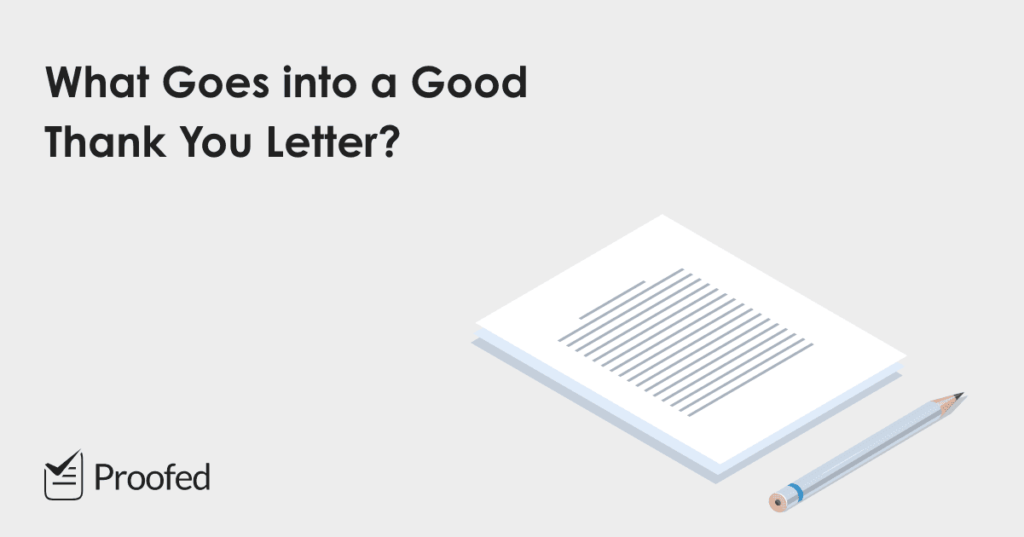A simple ‘thank you’ can go a long way in this world. A courteous note after a job interview, for instance, could help you secure the position. But a thank you letter can also be a simple way of letting a friend or family member know you appreciate them, which is just as important!
What goes into a good thank you letter or note, though? We have a few tips:
- Make sure to write your thank you note promptly.
- Pick a suitable format: email is fine for most cases, but you might want to send a note on paper for a more personal touch.
- Say ‘thank you’ immediately after the salutation, followed by a short explanation of why you’re thanking the recipient.
- Tailor your note’s content and tone to fit the recipient.
- Proofread your thank you note carefully before sending it!
Check out the guide below for more on how to write a great thank you note.
1. Write It Promptly
If someone has done you a favour, it is best to send a letter or note as soon as possible afterwards (otherwise it might seem like you forgot). This is especially important in a business or professional context.
After a job interview, for instance, sending a ‘thank you’ email within 24 hours will help the hiring manager remember you when they make a decision.
2. Picking a Format: Email or Paper?
A traditional thank you letter on paper (or in a card) is still a good idea if:
- The recipient is quite old-fashioned or formal (e.g. an elderly family member you don’t know very well and who may not be online very often).
- You want to show you’ve made an extra effort to send a handwritten note.
However, email is now standard in business contexts. And email is much quicker if you need to send a thank you promptly!
Find this useful?
Subscribe to our newsletter and get writing tips from our editors straight to your inbox.
3. What to Include in a Thank You Note
The exact content of a thank you note will depend on the situation. However, most thank you letters or notes will include a few basic components:
- A greeting or salutation that reflects how well you know the recipient.
- An opening line in which you thank the recipient. Don’t wait until the end to say ‘thank you’ – if you do, the recipient might not even see it!
- A more detailed explanation or why you’re thinking them.
- A final thank you and a sign off or valediction.
This doesn’t have to be very long, either! In fact, a short thank you – assuming it is sincere – will often have more impact than a very long one.
4. Tailoring Your Note to the Recipient
A good thank you note should feel personal. As such, you should tailor the tone of the note to the recipient and the situation.
This comes down to your relationship with the recipient, so think about this while composing your note. Relevant factors include:
- The overall tone (e.g. a note to a friend may be quite jokey, but a note to an employer or an authority figure would usually be more formal).
- Which salutation (greeting) and valediction (sign off) you use.
- Whether you include any extra information (e.g. you could include some personal news in a note to a friend, but not one for a potential employer).
And if you’re sending more than one thank you note (e.g. if you’ve had multiple job interviews), tailor each one to the recipient. Sending the same template thank you email to multiple recipients may sound insincere.
5. Proofread Your Thank You Letter Carefully!
Finally, errors in a thank you letter or note could make your gratitude seem insincere, so don’t forget to check your letter for typos before sending it! Alternatively, to be extra sure your thank you letter is error free, you could have it proofread by the professionals! Just let us know how we can help.



